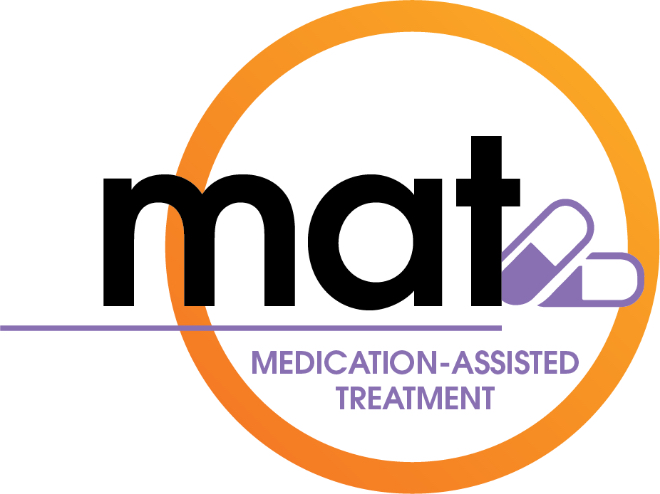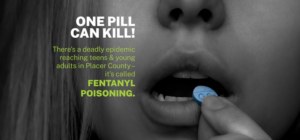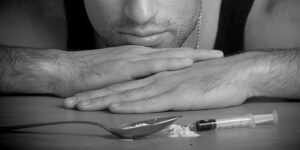Medication Assisted Treatment
For those who struggle with addiction to fentanyl and other opioids, the real challenge is not so much getting sober, but staying sober.
Oftentimes, those exiting outpatient treatment for substance use disorder return back to the environments where their substance abuse first began. There, surrounded by triggers, stressors, and bad influences, they often begin using again.
A good option for someone in this situation is a sober living environment (SLE), also known as a sober living home (SLH). Sober living homes/SLEs are structured residential facilities where those in recovery can live far away from the distractions and temptations of their typical environments.
Sober living homes/SLEs can differ but all share an emphasis on total sobriety and mutual support, as well as taking part in recovery programs. These environments offer a bridge between rehab and the return to full, independent participation in society.
Studies show those who stay in sober homes greatly enhance their chances for a sustained recovery.
However, those in recovery from opioid use disorders (OUDs) often run into obstacles entering these homes, due to their policies on medication.
Many, if not most of those in recovery for use of fentanyl and other opioids often need medication to suppress withdrawal symptoms and manage cravings. The need for these medications often extends well beyond the initial detox and stabilization period.
These medications provide an invaluable service and vital support for those recovering from OUD. By suppressing cravings, they enable the person to fully focus on therapy to address the underlying roots of their addiction.
This combination of medication and therapy is known as medication-assisted treatment (MAT). Studies have repeatedly shown it to be a highly effective treatment for OUD.
Monarch Sober Homes recognizes the importance of MAT for the recovery of those with OUDs. Besides offering outpatient rehab in Sacramento, we also lead the way in MAT-friendly sober living in Northern California, including:
In this article, we will explain the importance of MAT sober living in both treatment and recovery for those with OUDs.
What is Medication-Assisted Treatment?
Medication-assisted treatment (MAT) is the use of prescription medications in combination with behavioral therapy to treat substance abuse. It’s primarily used for the treatment of addiction to opioids such as heroin and fentanyl. Therapy is used to treat underlying issues driving the addiction, but generally takes time to work, and cannot treat powerful withdrawal symptoms or cravings.
That’s where medication comes in. Since the 1960s, various medications have been developed to prevent withdrawal symptoms, allowing a person to focus on properly detoxing. But since substance use disorder is a chronic condition, it’s also important to prevent cravings. For that reason, these medications may be used by those in recovery for years after quitting their former addictions.
This is known as medication maintenance. It is important to understand this when considering the living arrangements for a person in recovery, including SLE. In fact, guidelines recently issued by SAMHSA covering best practices for SLEs specifically recommend MAT for residents to increase their chances of successful recovery.
Research has repeatedly shown that MAT is the most effective treatment for opioid addiction.
According to the Substance Abuse and Mental Health Services Administration: “MAT has proved to be clinically effective and to significantly reduce the need for inpatient detoxification services for these individuals. MAT provides a more comprehensive, individually tailored program of medication and behavioral therapy that addresses the needs of most patients.”
MAT has also been shown to reduce deaths from opioid addiction by over half, and those in recovery programs that use MAT principles are less likely to drop out. This makes MAT services especially important for those abusing fentanyl and other opioids.
Support for MAT in the recovery community has been steadily growing for some time. For example, one of the leading addiction treatment providers in the country, the Hazelden Betty Ford Foundation, has supported MAT since 2012, after realizing the strong scientific basis for MAT. This shift to supporting MAT mirrors that of major public health organizations, including the Centers for Disease Control and Prevention, the National Institute on Drug Abuse, and the World Health Organization.
A word about terminology: Some prefer the term Medication-Assisted Recovery (MAR) because of its emphasis on recovery, and because they believe there is less stigma attached to the term. However, MAT is still the most commonly used term, particularly by scientists and government sources like SAMHSA and the FDA. So for clarity and consistency, we use the term MAT in this discussion.
Medications Used in MAT Treatment for Opioids
There are three primary medications approved by the Food and Drug Administration for the treatment of opioid dependence:
- Methadone — The oldest MAT medication (first approved in the 1960s), it reduces withdrawal symptoms and cravings. However, there is some potential for abuse. Brand names include Dolophione and Methadose.
- Buprenorphine — Buprenorphine also reduces cravings and withdrawal symptoms. It’s easier to obtain than methadone (due to less regulation), making treatment adherence more likely. It also features a ceiling effect that limits euphoria, which mitigates its abuse potential. Brand names include Zubsilv, Subutex, Probuphine, Cassipa, Bunavil, and Sublocade (once-monthly injectable). It’s also used in combination with naloxone to produce suboxone.
- Naltrexone — Naltrexone can block the euphoric effects of opioids. Unlike methadone and buprenorphine, it can only be used when the person has been cleared of opioids in the body for a week or so. It’s available under the brand name Vivitrol.
For those with alcohol use disorder (AUD), there is also an FDA-approved medication called disulfiram (brand name Antabuse). Naltrexone can be used to treat AUD as well.
Some MAT medications have built-in safeguards to prevent abuse.
For example, Suboxone, a common MAT medication, is designed to be dissolved under the tongue. When a person tries to inject it (a common method of abusing medications), opioid withdrawal symptoms such as vomiting and diarrhea are induced. These symptoms do not occur if the medication is taken as intended. Suboxone also has a “ceiling effect” – increased dosages do not yield greater euphoria. This also prevents abuse.
Note: Monarch Sober Homes cannot prescribe MAT medications, but it can provide referrals to prescribing doctors for those who need them. For more information on these medications, click here.
Therapies Used in MAT Treatment for Opioids
Behavioral therapy is a crucial component of MAT. Scientific research supports the use of therapy in conjunction with medication for treating OUDs.
The following is a list of behavioral therapy modalities endorsed by the Department of Health and Human Services for treating OUD:
- Individual Counseling
- Group Counseling
- Family Therapy
- Cognitive Behavioral Therapy
- Contingency Management
- Motivational Interviewing
All these therapies are offered at the Monarch Recovery Center, our
Difficulties of Being on MAT While in Sober Living
By California state law, treatment centers must follow MAT guidelines, but these guidelines do not apply to SLEs. Thus, those exiting California treatment centers and moving into sober living homes often run up against policies that exclude the use of medications like methadoneor Suboxone.
Many SLEs lack the staff to supervise the use of these medications, or their staff is not properly trained. There is even a belief among many sober home operators that using medication to treat opioid addiction and maintain sobriety is simply wrong, akin to not being in treatment and the belief those utilizing MAT are not full abstinence from any and all chemical substances,
This belief is not only mistaken, but it’s also harmful. Detoxification and behavioral therapy, while important, are in most cases not enough by themselves to promote sustained recovery for those with OUDs.
Those with OUDs often need MAT medications, not to get high, but simply to feel normal. These medications balance out the chemistry in an addicted person’s brain, quieting the cravings in their head and allowing them to get on with the work of recovery through therapy. Because they take longer to absorb into the bloodstream than opioids like fentanyl and heroin, they don’t cause euphoria. Some (like naltrexone) can also block the effects of illicit opioids, further helping to prevent relapse.
Studies show that without medication opioid relapse rates exceed 90%. Worse, when the addicted person resumes using (in an attempt to feel normal), it is often at the same dosage as before detoxing – only this time without their previous tolerance, often resulting in a fatal overdose.
Monarch Sober Homes are MAT-Compliant
Monarch Sober Homes has a different philosophy.
Rather than double down on a moralistic and ineffective approach, Monarch is invested in practical, successful evidence-based methodology.
Whether you are in an outpatient treatment program of your choice or our own Monarch Recovery Center, we will work with you to ensure that you receive care individualized to your needs when entering our homes. Our sober homes are staffed with MAT-trained medication managers, allowing us to work with your needs, rather than against them.
Monarch Sober Homes is the only SLE operator to offer MAT sober living in San Francisco or Sacramento.
Here’s how Monarch accommodates MAT in its sober homes:
- Onsite, paid live-in House Managers process, oversee, and document self-administration of medications using pill count sheets
- All medications are required to be disclosed and approved before intake
- The resident administers his or her own medication
- Based on NARR guidelines, house managers overseeing MAT medication administration are educated and trained to meet CA state standards
- All medications require medical consent of release by the prescribing doctor to Monarch management
- MAT medications are stored securely away in a locked safe for proper disposal of unused or expired MAT medications
Monarch Sober Homes welcomes those from all backgrounds, regardless of race, cultural heritage, gender, sexual orientation, physical ability, or socioeconomic status. We combine MAT services with luxury sober living, with homes featuring such amenities as hardwood floors and skylights, all located in desirable and walkable neighborhoods. Complimenting the cozy interiors, you will find within these homes a sincerely caring and supportive community among professional staff and residents alike.
Those living in our Sacramento SLEs can also attend the Monarch Recovery Center, where we offer MAT education and extended oversight services. These services include counseling (individual, group, or family), recovery planning, and a variety of behavioral therapies to help address the roots of your addiction.
Addiction is a serious disease, but you can get better. Sobriety is possible. Contact us today to speak with a representative who can answer any questions, discuss fentanyl addiction treatment options, and help you get started on the path to long-term recovery.
SOURCES



